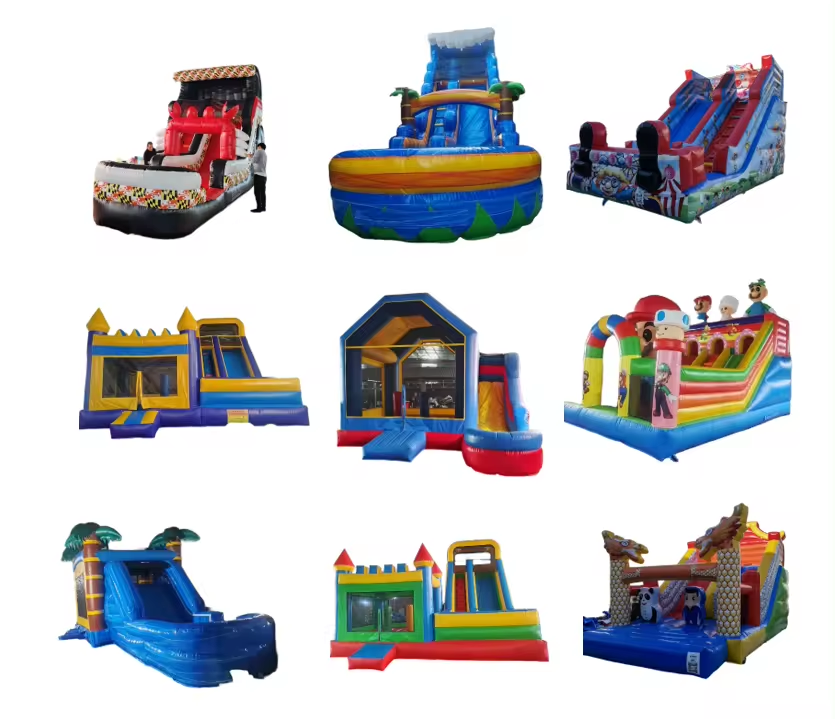A pivotal question commonly asked when investing in a bounce house is, “How long will it last and does it require dedicated maintenance?” Herein, we decipher these queries based on factual data and provide robust advice to maximize the lifespan and keep the bounce house in excellent physical condition.
Primarily, the longevity of a bounce house primarily depends on its use and the routine preventative care it is given. Some industry sources indicate that with proper care and use, commercial-grade inflatable bounce houses last for approximately 3-5 years, while residential-grade inflatables can last between 1-5 years. It is well worth re-emphasizing that these are approximate estimates, and the actual lifespan could vary.
- الاستخدام: How often the bounce house is used and the manner in which it is used directly impacts its lifespan. High-frequency usage, along with improper use such as overcrowding, rough play, and using it with shoes can lead to wear and tear, thus shortening its lifespan.
- Material and Quality: The bounce house’s durability is directly tied to the quality of the materials used and its fabrication. Bounce houses made with heavy-duty, reinforced PVC material and double to quadruple stitching will endure the rigors of use better, thus extending longevity.
- Maintenance and Cleanliness: Regularly maintaining your bounce house is an essential prerequisite to extend it’s life expectancy. Routine checks and fixes for any tear or blemishes must be undertaken. Cleaning the bounce house post-use, ensuring it is dry before packing it away, and storing it in a cool, dry place is paramount to avoid mildew, which can weaken the material.
- Ground preparation: Always set up your bounce house on a clean, level space. Remove sharp objects, like stones, glass, and sticks that could puncture the bounce house. Using a tarp underneath your inflatable provides an additional layer of protection.
- Supervision: Always ensure adult supervision when the bounce house is in use. Having a set of enforceable rules such as no shoes, no sharp objects, no rough play, and adhering to the maximum capacity can help prevent unnecessary damage.
Professional Repairs: If a significant tear occurs, getting it repaired by a professional ensures it does not affect the bounce house’s structural integrity and is fixed correctly.
In conclusion, a bounce house does not require extraordinary maintenance. However, regular upkeep, a keen eye towards cleanliness and the enforcement of proper usage rules can enhance durability significantly. As the saying goes, “Take care of your bounce house and your bounce house will provide many years of jumping joy.”

DIY Repairs for Minor Holes in Your Bounce House
Detecting a minor hole or puncture in your bounce house isn’t the end of its lifespan. In fact, if handled correctly and timely, minor damage like this can be fixed right at home with a bit of know-how and a good repair kit. Here are step-by-step instructions on how you can patch such small holes by yourself:
Identifying the Hole: Fill the bounce house with air. Then, use a spray bottle of water mixed with a few drops of dish soap. Spray this mixture on the inflated house, and look for bubbles — these will usually signal where the hole is.
Preparing the Area: Once you identify the hole, deflate the bounce house. Clean and dry the area around the hole thoroughly. This is crucial as applying the patch on a dirty or damp surface would affect its adhesion.
Cutting the Patch: Use a patch from your repair kit that is about an inch larger than the hole on all sides. Cut the patch in a round shape, as it leaves no corners that could peel off later.
Applying the Adhesive: Apply a thin, even layer of the adhesive provided in your patch kit on both the bounce house where you’re applying the patch as well as on the patch itself. Wait for the adhesive to become slightly tacky before proceeding to the next step.
Applying the Patch: Carefully place the patch over the hole ensuring it completely covers the damaged area. Press it firmly to smooth out any air bubbles and ensure a tight seal.
Curing: After applying the patch, wait for at least 24 hours before inflating the bounce house. This waiting period allows the adhesive to cure properly and ensure a durable fix.
Precautions: Patching a hole may seem straightforward, but here are few important things to remember:
Never apply a patch on the area without deflating the bounce house first. The pressure from the air inside might interfere with the process.
Always clean the surface properly before applying the patch. Dirt or moisture can weaken the adhesion.
Make sure to use adhesive and patches specifically designed for bounce houses or inflatable structures.
If the hole is larger than a small pinhole or is near a seam, it’s best to consult a professional. Improper patching might worsen the damage.
